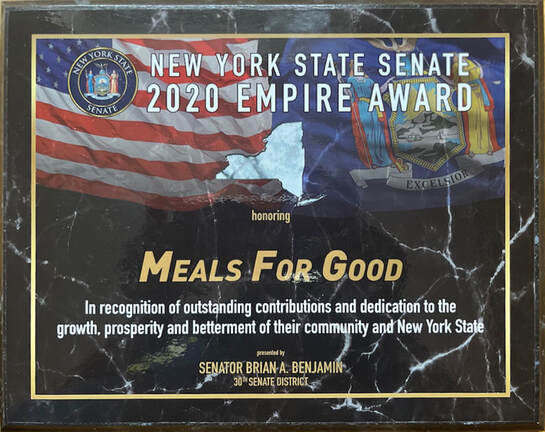|
By Christopher Klein
The U.S. food stamp program was launched at a time when the nation was facing a tragic paradox: As millions of Americans suffered from hunger during the Great Depression, the country’s farmers agonized under a crushing bounty. The economic collapse of the 1930s had sapped food consumers of their purchasing power, so farmers found themselves with a glut of crops and livestock. That glut, in turn, sent agricultural prices plummeting. In order to create artificial scarcity and boost prices, the U.S. Department of Agriculture under President Franklin D. Roosevelt initially paid farmers to plow under their fields and slaughter their pigs. The destruction of food at a time when so many stomachs rumbled sparked an outcry that prompted the Federal Surplus Commodities Corporation (FSCC), a New Deal agency established in 1933, to instead purchase excess food and distribute it directly to the needy at little or no cost. This initiative, however, dampened business for grocers and food wholesalers, who complained of government interference and unfair competition in the marketplace. Facing the triple problems of farm surpluses, weak sales for grocers and hungry citizens at a time of 17 percent unemployment, the FSCC hoped tiny paper squares could solve its trilemma. Rochester, New York, then became the petri dish for a new government-run economic experiment. On the morning of May 16, 1939, FSCC officials watched anxiously as they opened their doors inside Rochester’s old post office to launch the country’s latest relief measure. As newspaper reporters and photographers jockeyed for position to document history in the making, the first person in line approached a cashier window. Ralston Thayer, a 35-year-old machinist who had been out of work for nearly a year, handed a clerk $4 from his latest unemployment check and received $4 of orange stamps in return as well as $2 of blue stamps for free. The orange “food stamps” could be redeemed at any of the 1,200 participating Rochester groceries for any goods on the shelves, while blue stamps could only be used to buy surplus agricultural items such as butter, eggs, prunes, flour, oranges, cornmeal and beans. Grocers could exchange the food stamps for money at commercial banks and FSCC offices. Throughout the day, approximately 2,000 Rochester residents followed in Thayer’s footsteps. For every $1 of orange stamps bought, they received 50 cents worth of blue stamps for free, thereby expanding their purchasing power by 50 percent. That afternoon, waves of customers poured into Rochester’s grocery stores with their crisp new booklets of orange and blue stamps in hand. Rochester grocers benefited as well as recipients channeled $50,000 into their coffers during the program’s first four days. “I was cleaned out of flour when the stamp rush started,” grocer Joseph Mutolo told FSCC officials when he became the first retailer to redeem the stamps. “That certainly is different from the old days when you gave food away at the big food depot. Then, when you gave away flour or butter, I sold none. Now it seems I can’t keep stocked up.” Building on the initial success, the food stamp program was rolled out to additional pilot cities and expanded to half the counties in the United States. Eligible Americans could buy between $1 and $1.50 in orange stamps weekly for each family member. The program fed 20 million Americans until it was discontinued in 1943 when the economic stimulus provided by World War II eased unemployment and crop surpluses. President John F. Kennedy, who had been struck by the poverty he had witnessed in West Virginia during the 1960 Democratic primary campaign, revived food stamps as a pilot program as one of his first actions upon taking office in 1961. While recipients were still required to pay for their food stamps, the special stamps for surplus goods were eliminated. The Food Stamp Act of 1964, signed into law by President Lyndon B. Johnson on August 31, 1964, codified and expanded the program. “The food stamp plan will be one of our most valuable weapons for the war on poverty,” Johnson proclaimed at the signing ceremony. Although launched by Democratic presidents, the food stamp program saw its largest expansion under the stewardship of a Republican president, Richard Nixon, in the wake of Senator Robert F. Kennedy’s highly publicized trips to the Mississippi Delta and Appalachia, the Poor People’s Campaign of Dr. Martin Luther King, Jr.and the 1968 CBS documentary “Hunger in America,” which shocked viewers with images of starving children with sunken features and bloated bellies. During the course of Nixon’s presidency, the food stamp program grew fivefold from 3 million recipients in 1969 to 15 million by 1974. Beginning in 1990, electronic benefit transfer cards, similar to debit cards tied to benefits accounts, replaced paper food stamps. With the elimination of paper food stamps came a 2008 change in the program’s name to the Supplemental Nutrition Assistance Program (SNAP). The SNAP program served nearly 40 million Americans in 2018, with each participant receiving an average monthly benefit of $127. Food producers and retailers also continued to benefit. For example, UBS Analyst Michael Lasser estimated that Walmart derived about 4 percent of its U.S. sales from food stamp purchases in 2018. To read the entire story: https://www.history.com/news/food-stamps-great-depression
0 Comments
by Christopher Ingraham in the Washington Post, 3/14/19
Few data points more clearly illustrate how decades of discrimination affected black Americans than the racial wealth gap. As of 2016, the typical black family had a net worth of $17,100, roughly one-tenth the $171,000 accumulated by a white household, federal research shows. Economists tend to trace the staggering divide to the nation’s long history of bigotry against its black citizens, starting with slavery. But decades of discrimination after the Civil War played a role, too, from the overt racism of Jim Crow laws to the more subtle forms of biasbuilt into the New Deal, the G.I. Bill and many of the nation’s economic and criminal justice policies of the 20th century. But there’s less agreement on the exact mechanisms by which these policies contributed to such disparate financial outcomes. Some economists say it comes down to inheritance, which allows families to build on the gains of preceding generations. Other researchers contend the difference can be found in the types of financial assets held by black and white families. But in February, research by the Federal Reserve Bank of Cleveland concluded that differences in black and white wealth can almost entirely be explained by disparities in black and white incomes. If confirmed, the finding could help lawmakers better understand which policies would be most effective at closing the racial wealth gap. “We find that the income gap is the primary driver behind the wealth gap and that it is large enough to explain the persistent difference in wealth accumulation,” the authors write. “The key policy implication of our work is that policies designed to speed the closing of the racial wealth gap would do well to focus on closing the racial income gap.” Wealth, or net worth, is a measure of a family’s assets — such as a home, retirement accounts, and money in the bank — minus its debts, which usually include things like mortgages, credit card debt and consumer loans. If income is a flow of money into a household, wealth is the household’s stock of financial assets. Typically economists view this stock as growing over time, as households save money that they don’t need to spend. But in order to save money, you have to be bringing in enough income to cover all your expenses. And black families tend to earn much less than white ones: In 2016, for instance, the typical black family earned $35,400, while the typical white household brought in $61,200. Those differences persist even when you control for other factors, like education, that can have a significant effect on earnings. In 2014, for instance, white college-educated families earned about $24,000 more per year than black college-educated families, according to the Pew Research Center. The Cleveland Fed economists constructed a sophisticated economic model capable of projecting changes in household wealth over decades, factoring in things like inheritances, income and financial portfolio composition. That model suggests that, given what we know about black and white finances today, it would take approximately 260 years for the wealth of the average black family to achieve 90 percent of the wealth of the average white family. “We find that one factor accounts for the racial wealth gap almost entirely by itself: the racial income gap," they wrote. One vivid illustration of this: If black and white incomes had been similar starting in 1962, their model shows, the black-white wealth gap would have all but disappeared by 2007. They found that tweaking other model parameters, like inheritances and investment composition, had a much smaller overall effect. To read the whole article, https://www.washingtonpost.com/us-policy/2019/03/14/new-explanation-stubborn-persistence-racial-wealth-gap/ By Congressperson Earl Blumenauer in civileats.com. posted 1/30/19
Our food system and environment are inexorably linked. What we grow–and how we grow it–has a tremendous impact on our land, water, and climate. And right now, our climate is in crisis. The Intergovernmental Panel on Climate Change (IPCC), the gold standard for climate science, implores the world to cut greenhouse gas pollution by half in the next 12 years, and eliminate them entirely by 2050, to avoid the most catastrophic effects of climate disruption on people, economies, and the natural world. We must build solid, lasting bonds between the climate justice movement and the movement to reform our food system. This starts with a Green New Deal. The Green New Deal is an incredibly powerful social, economic, and environmental effort to invest in clean energy jobs and infrastructure. While the exact details have yet to be worked out, underlying this movement is a series of policy proposals to stop investing in fossil fuel development and redirect these resources toward decarbonizing the economy and making it more equitable. Fueled by immense social power, it is designed to build on Franklin Delano Roosevelt’s sweeping New Deal that invested in natural resource conservation, built massive public works projects, and reformed financial institutions in order to pull the country out of the economic crisis of the Great Depression. Today, the Green New Deal is intended to make massive investments and reforms on the same scale in order to pull the world out of the climate crisis. But the Green New Deal won’t have the impact we need it to without a fundamental change to the way we produce our food. As of 2016, American agriculture contributed over 9% of US greenhouse gas pollution, largely due to emissions from livestock and poor soil management. If we are to reach the climate goals set by the IPCC, the food system must play a key role in reducing these greenhouse gas emissions and even sequestering carbon—actually taking carbon dioxide out of the atmosphere—through regenerative agricultural practices. (to read the whole article, https://civileats.com/2019/01/30/a-green-new-deal-must-include-food-and-farming |
|

